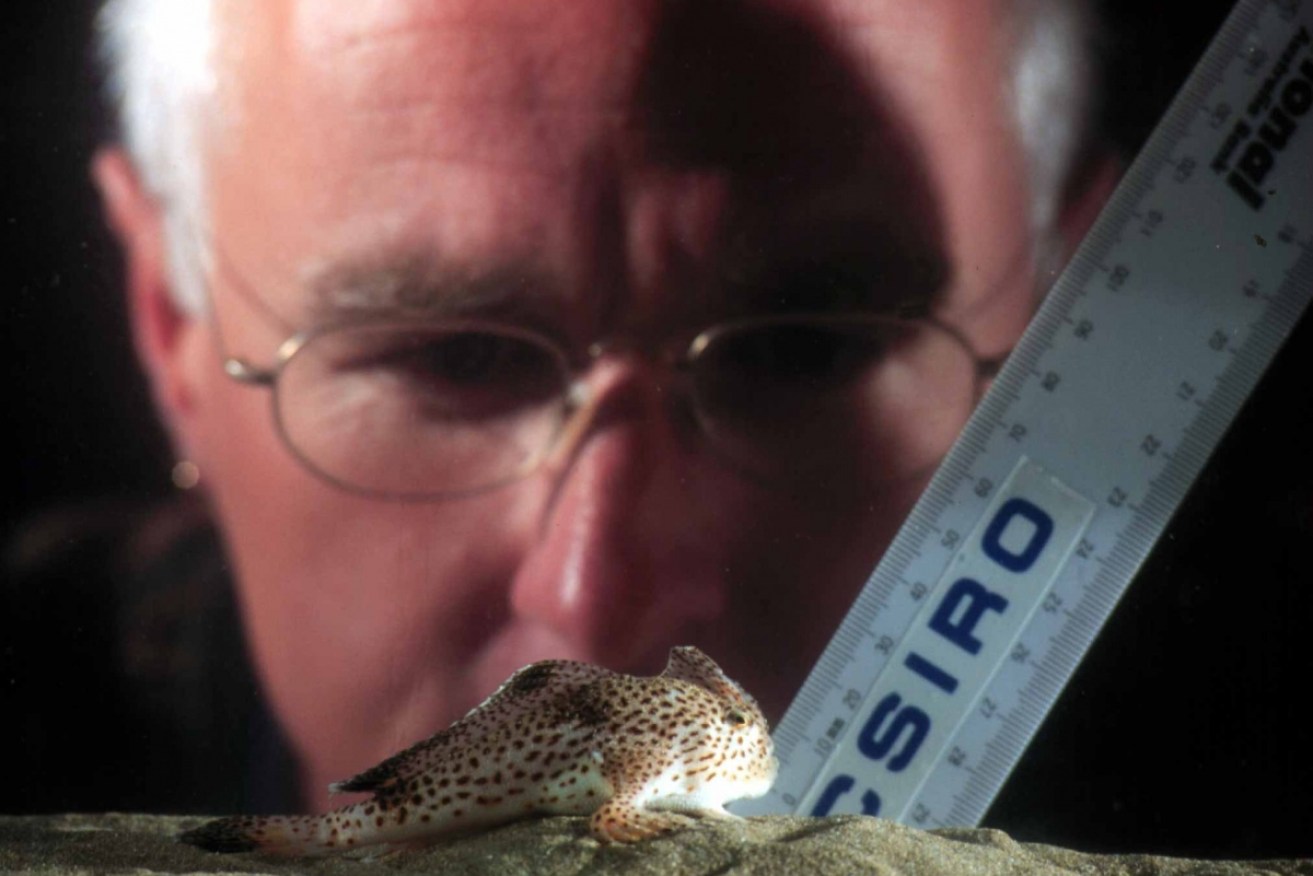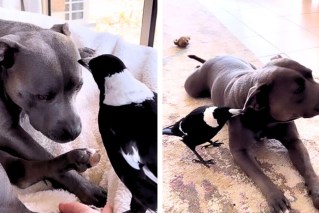Rare ‘walking’ fish given a new lease of life in Tasmania

Mark Green with the rare and endangered spotted handfish at Taroona Marine Research Centre. Photo: AAP
One of the world’s rarest fish could have a new lease of life in Tasmania thanks to an interstate breeding program.
The tiny spotted handfish, that prefers to ‘walk’ on modified fins across the seabed rather than swim, is found at only nine spots in the Apple Isle’s south-east.
But a joint breeding program at Tasmanian and Melbourne aquariums assisted by the federal and state governments and CSIRO is aiming to boost that number.
In 2017, an “ambassador” population of adult spotted handfish and eggs was collected from the River Derwent and brought into captivity.
Since then, 73 handfish have hatched.
Thirty of those hatchlings were on Thursday put on public display at Seahorse World at Tasmania’s Beauty Point.
“More people can now see these animals and understand more about them,” CSIRO senior research scientist Tim Lynch told AAP.
“It’s a great milestone. When we were doing (captive breeding) trials back in the ’90s, we had a high death rate. But they’ve manage to overcome that.”
Dr Lynch said new technology at the Beauty Point aquarium can keep water temperatures stable, which is what the unique fish wants.

The tiny spotted handfish prefers to ‘walk’ on modified fins across the seabed rather than swim. Photo: AAP
The next goal is to get the fish reproducing in captivity this spring so they can then be released in the wild.
“If we have a successful breeding event this year we’ll look to stock a couple of sites where the fish have gone locally extinct,” Dr Lynch said.
Handfish, closely related to the deep-sea angler fish, once populated the world but are now only found in south-east Australia, with most species restricted to Tasmania.
“Most fish have a swim bladder which allows them to float but these guys don’t have that,” Dr Lynch said.
“Instead of swimming they walk around on the bottom of the sea and hide behind things and ambush things to eat them.
“They can swim, but about as well as a chicken can fly.”
In 1996, the spotted handfish was the first marine fish to be listed as critically endangered by the International Union for the Conservation of Nature.
-AAP








